Film Inquiry Recommends: Silent Film Of The 1920’s
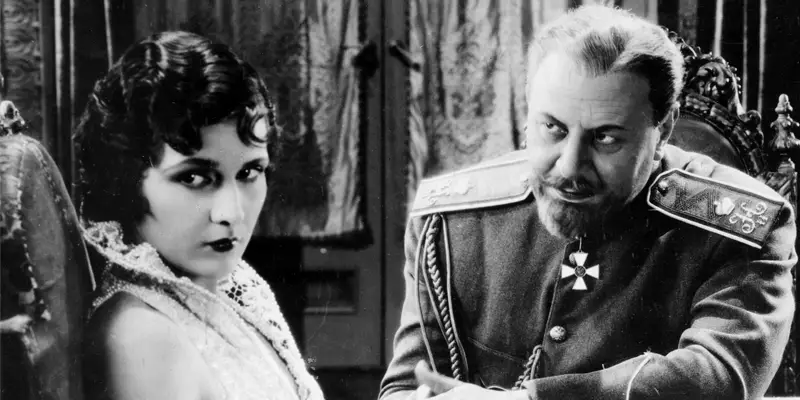
Alex is a 28 year-old West Australian who has a…
Over at our official Facebook page, we are currently posting daily film recommendations, with each week being a different theme. This is a collection of those recommendations! This week’s theme is Silent Films from the 1920’s that are worth seeking out.
Whilst 2011’s The Artist failed to revive the long dormant silent film genre, it reminded us of the largely untapped plethora of silent films that were churned out during the 1910’s-30’s, before the game-changing switch to sound cinema occurred. Due to lack of care and poor housing conditions, many silent films from that era are considered lost, faded or destroyed, due to only existing on old film stock.
Silent cinema is the birth of modern cinema and looking back at the pioneering and practical cinematic techniques achieved in these films inform us of the transformation in filmmaking that has happened within the past century. Here’s just a selection of some of the more underrated silent films from some of the worldwide pioneers of the classic cinema style from the 1920’s.
1. The Last Command (1928, Josef von Sternberg)
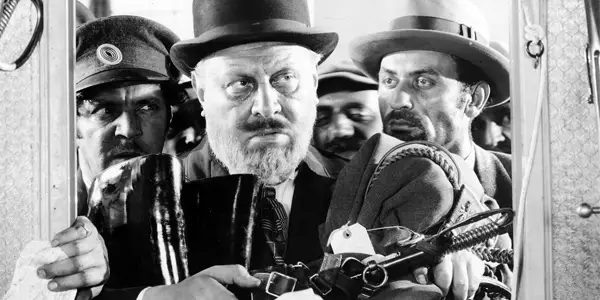
Grand Duke Sergius Alexander (Emil Jannings) is a general in the Imperial Russian army during the worst part of World War 1. He attempts to balance his die-hard patriotism with his humanistic feeling for the men who work for him. When his intelligence officers capture 2 devoted revolutionaries, stoic Lev Andreyev (William Powell) and the beautiful Natalie Dabrova (Evelyn Brent). Sergius humiliates Andreyev publicly, but becomes infatuated with Natalie, making her his mistress even though he fully understands her different beliefs.
She agrees to this in order to gather information for her people but soon finds herself drawn to Sergius’ sensitivity. After the White Army is defeated, Sergei is broke and has lost everything. Ending up in 1928 Hollywood as an obscure extra, he is recognised by Andreyev, now a successful Hollywood director. As punishment for his war crimes, Andreyev hires his old nemesis for a war film and casts him as a general, forcing Sergius to reflect on his tormented past.
The film was based on a general in the Imperial Russian Army named Theodore A. Lodigensky, who Ernst Lubitsch (a German film director) had met in New York, who opened a Russian restaurant after fleeing the communist revolution. Lubitsch encountered the ex-general once more, when the latter appeared in full uniform looking for work as a film extra (at $7.50 a day, the same rate that Sergius earned in the film). Lubitsch later told Lajos Bíró (the film’s writer) this story. Emil Jannings won the very first Academy Award for Best Actor in a Leading Role for his performances in this film and The Way of All Flesh, as the Academy initially used to give awards for an actor’s full year of work rather than an individual performance.
2. Pandora’s Box (1929, G. W. Pabst)
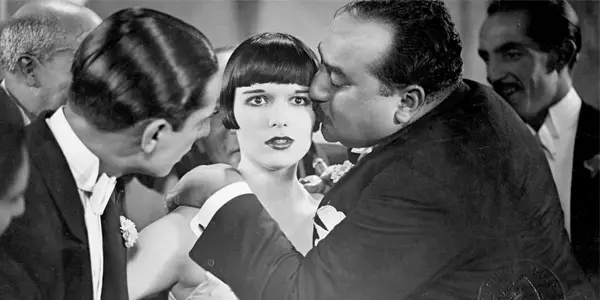
Lulu (Louis Brooks) is a dazzling young woman who has the ability to charm any man that she meets, a talent which she uses to her own advantage. Despite this, she is helped out by rich newspaper publisher Dr. Ludwig Schon (Fritz Kortner), who is engaged to be married to Charlotte (Daisy D’ora), a woman of his own class, whilst Lulu is just treated as a lower-class lover.
Ludwig arranges for Lulu to appear in his son Alwa’s musical vaudeville show, causing the son to fall in love with Lulu as well. When Ludwig and his fiancée go to watch the show, Lulu ensures that he is put in a sticky situation, forcing Ludwig into marrying her, knowing full well it will ruin his elated reputation. On his wedding day, Lulu’s deception forces Ludwig into madness, leading to his and Lulu’s personal downfalls.
The film’s historical status lies with Countess Augusta Geschwitz, as she is considered by historians to be cinema’s first lesbian character, due to her open attraction towards Lulu. Despite the film being labelled a German Expressionist film, it’s much more naturalistic than its contemporaries such as The Cabinet of Dr. Caligari and Metropolis, shedding the harsh lighting and extreme stylization featured in those films.
Another notable aspect of this film is the star-making performance by lead actress Louis Brooks, who went onto a successful silent film career, sadly retiring in 1935 due to her placement on the infamous Hollywood Blacklist after her turns in sound pictures were unsuccessful. The film’s progressive take on eroticism and striking performances make this silent film stand out and one worth tracking down (The Criterion Collection DVD unfortunately went out of print quite a while ago).
3. Dr. Jekyll & Mr. Hyde (1920, John S Robertson)
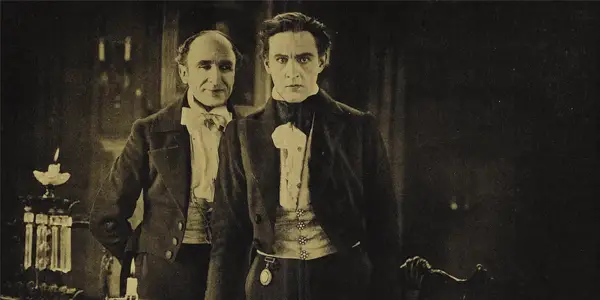
Considered by movie historians as being the first great American horror film, John S Robertson’s Dr. Jekyll & Mr. Hyde is the first of many Jekyll adaptations, a fair few that borrowed considerably from this film. The film is most well known for its frequent use in other films/documentaries, due to its public domain status, which allows anyone to use clips from the film without any legal ramifications, the fate for many older classic films.
Much like the other iconic Universal Monsters, the Dr. Jekyll and Mr. Hyde story has been mined quite frequently, with 50+ film adaptations made within the past 100 years. This is a tale so popular that the year that this adaptation was made by John S Robertson, 2 others were released in the same year – A 40 minute American version by J. Charles Haydon and Der Januskopf, an slighty altered German adaptation of the film by acclaimed silent film auteur F. W. Murnau (a version that is unfortunately lost).
John S Robertson’s adaptation differs slightly from the source material by adding narrative elements of The Picture of Dorian Gray into the mix. The plot of this re-telling of the story follows Dr. Henry Jekyll (John Barrymore), a well established and respected doctor of medicine who splits his time between experimenting on new medicines to treat the human body and aiding poor patients at a self-funded health clinic. One night, Sir George Carewe, (Brandon Hurst), the father of his fiance Millicent Carewe (Martha Mansfield) starts to criticise Jekyll’s constant good nature, hinting that the human mind has the capacity for much darker, unexplored areas of brutality.
When a sensual dancer makes Jekyll aware of his ranging emotions, he decides to create a tonic which could enhance his darker emotions. After testing the tonic out himself, the infamous persona of Edward Hyde is born. As Jekyll’s shifts into Hyde become more frequent and unpredictable, Hyde’s evil persona starts to take over, causing a tragically-laced murder spree around London, as Jekyll fights to stop his alternative personality from killing the only person he loves – Millicent.
The film’s most well known for John Barrymore’s boisterous performance, as there was no special effects to allow for the Hyde/Jekyll transformation, thus Barrymore just had to contour and manipulate his own body to act out the painful transition. The film’s macabre nature is kept intact, tearing down the belief that all old classic films are good-natured and devoid of modern horror tropes. 10 years later, the impact of this film was quite diminished by Rouben Mamoulian’s 1931 sound production, which got Fredric March his first Oscar.
4. The Hands of Orlac (1924, Robert Wiene)
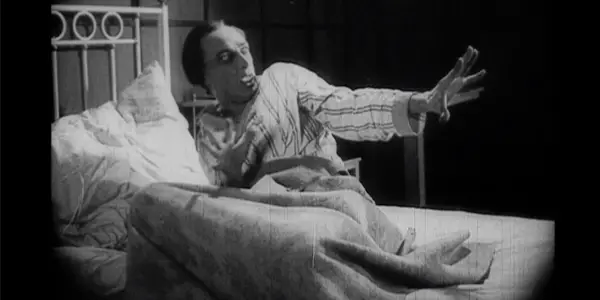
Robert Wiene was an extremely prolific German silent film director, directing over 50 films, with his most prominent being the German Expressionistic The Cabinet of Dr. Caligari, a film that had a major influence on the horror and noir genres. The Hands of Orlac was made several years after Caligari, mixing the harsh visuals of that film with more naturalistic elements, showing his transition in visual style.
Based on the Maurice Renard novel of the same name, The Hands of Orlac is about world famous pianist Orlac (silent film star Conrad Veidt), who is badly injured in a train wreck. Desperate to save his hands, he begs the doctors to do anything to keep them. The doctors manage to transplant hands from a deceased individual, not realising that the individual was a prolific murderer. Through supernatural means, the hands begin to to have a mind of their own, leading to murders happening around Orlac that are blamed on him. At the same time, he must deal with his wife that he cannot touch due to the new hands and a mysterious stranger that decides to blackmail Orlac over the murders. A film filled with some great theatrical performances, The Hands of Orlac is another fine gloomy Gothic horror story, fuelled by Wiene’s keen eye for German Expressionistic visuals.
5. The Phantom Carriage (1921, Victor Sjöström)
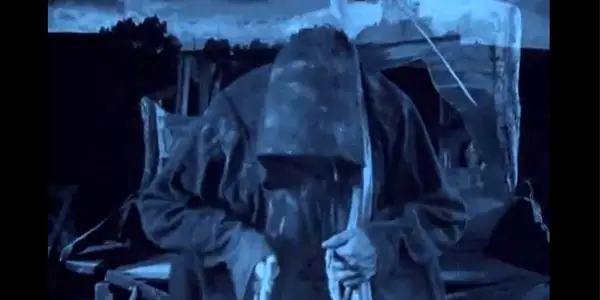
To best describe Victor Sjöström’s pioneering film The Phantom Carriage is a existentialist riff on Charles Dickens’ classic tale A Christmas Carol. A ghost story about revisiting the mistakes of the protagonists past, except instead of a somber Christmas atmosphere, Sjöström’s film uses supernatural imagery as a flashback technique to explore the failed and tortured life of the protagonist David Holm, played by Sjöström himself. Victor Sjöström was a hugely influential silent film director, with this film, He Who Gets Slapped and The Wind that featured advanced uses of special effects in cinema, especially in the case of Phantom Carriage. The Phantom Carriage’s legacy has been kept alive by the high praise given to it by arthouse director Ingmar Bergman, who claimed the film as a major influence on his own work, going on to cast Victor Sjöström as the lead in Wild Strawberries.
The Phantom Carriage is based upon the old folk tale about the last person to die before the clock strikes twelve on midnight on New Year’s Eve must serve as the driver of death’s carriage, taking the souls of the recently departed into the afterlife. When Sister Edit, a dying Salvation Army nurse, requests to meet David Holm before she dies, her companions go out to seek the unknown man. David Holm, a penniless bum, is hanging out with his friends when Edit’s friends find him and try to convince him to see Edit.
A fight between Edit’s friends, David and his own friends break out, which results in David being hit and the head and dying – just before New Year’s Eve. He is visited by death’s driver, who happens to be Georges (Tore Svennberg), an old friend of David who had died the year before. Showing pity towards the pathetic David, Georges decides to take a look back throughout David’s life, who he went from happy family man to the failure he became and why his relationship with the dying Edit is so important.
Cinematographer Julius Jaenzon and lab executive Eugén Hellman worked extensively in post-production on the film’s ground-breaking special effects, using double exposures made within the camera to allow the transparent characters to roam around a 3 dimensional environment, a technique which hadn’t been done in such a grand fashion before. Whilst the idea of a foreign arthouse silent film may appeal to the most niche audience ever, The Phantom Carriage is quite a heart-warming and well-made film, a traditional folk tale which still holds up today, thanks to its ambitious visuals, solid ensemble acting and unique soundtrack, one which has shifted over the years throughout the film’s different high-definition remasters.
6. The Man Who Laughs (1928, Paul Leni)
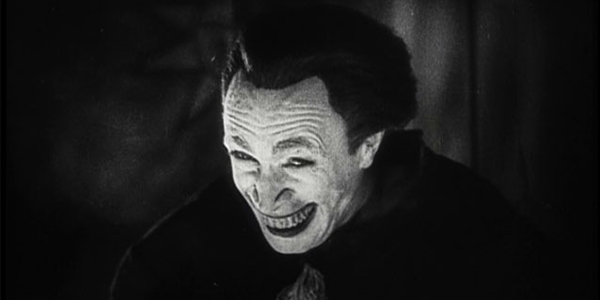
Unfortunately Paul Leni is a director that many people have never heard of, despite being a key figure in the German Expressionist movement, alongside other well-known directors like F.W. Murnau, Fritz Lang and Robert Wiene. Paul Leni was a German art director who worked on a ton of German silent films throughout the 10s + 20s, with his acclaimed work giving him the ability to obtain directing work in America, where his 4 films for Universal Studios in the late 20’s remain quite influential today. The Cat and the Canary, The Chinese Parrot, The Last Warning and The Man Who Laughs, a film famous for its distorted protagonist, an iconic character who would lead as the lead aesthetic influence on the Batman villain The Joker.
The Man Who Laughs is an adaptation of Victor Hugo’s book of the same name, a melodramatic tale which uses cues from horror films of the time, which highlight the tragic nature of the tale. Whilst diverting from the original tale, the film is slightly restructured in order to be more similar to The Hunchback of Notre Dame and The Phantom of the Opera, other melodramatic tales with tortured tragic protagonists and were big financial hits for Universal Studios.
Set during 1690 in England, the father of Gwynplaine (Conrad Veidt, most well known for The Cabinet of Dr. Caligari), has offended the King James II by refusing to bow to him. Gwynplaine’s father is brutally killed in an iron maiden and Gwynplaine’s face is gruesomely disfigured into a permanent smile. As he grows older, he makes a living in a travelling freak show, with the main highlight being Gwynplaine’s unchanging face. Gwnplaine is in love with Dea (Mary Philbin, whose appearance has been frequently linked to that of singer Madonna), a blind girl who works with him at the travelling show, but cannot bring himself to marry her due to his appearance. When the show enters Gwynplaine’s old hometown, the royal family starts to find out about Gwynplaine’s tragic past and his rightful spot within the royal family due to his father’s old position, a secret which starts to tear Gwnyplaine’s life apart.
7. The Last Laugh (1924, F.W. Murnau)
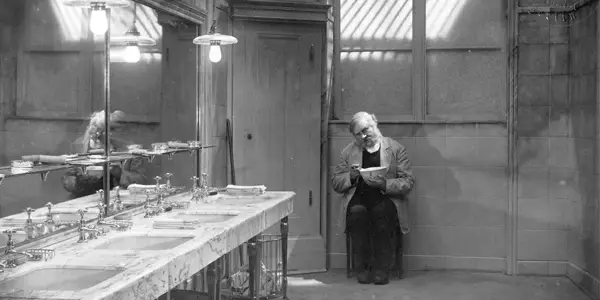
Whilst F.W. Murnau will always be known for directing Nosferatu, one of the most influential horror films of all time, Murnau has several other non-horror silent films that are definitely worth seeking out. Sunrise, Murnau’s romance film (which was nearly destroyed in the infamous 1937 Fox vault fire) and his crazy interpretation of Faust in 1926 are some of his other great silent films, but the one I wanted to highlight today was the quirky drama The Last Laugh, one which has had a definite impact on the black comedy genre.
Emil Jennings (from The Last Command) stars as a lowly doorman for a famous hotel, who is demoted to the position of washroom attendant, a sad job that brings about constant humiliation for the elderly man. The new job makes his friends and family reject him, with his only friend being the night watchman (Georg John), who both sleep in the same hotel they work for. As the washroom attendant’s life gets quite worse, a sudden change of coincidental luck changes his life forever, allowing him to turn the tables on those who had wronged him previously.
The Last Laugh’s main innovation is that its inter-titles do not feature any dialogue, a drastic change from most silent films. All the dialogue within the film is ambiguous and up to the audience to interpret themselves, adding an increased sense of audience participation and attention, as the film is purely visual story-telling, stripped of any audio elements that help enhance cinema normally. Whilst the film’s premise may think the film is a depressing drama, the film’s sudden ending is quite hilarious and adds a black comedic edge to the entire film, which leaves you feeling strangely uplifted by the strange story. Whilst it is hard to track down nowadays due to its quiet status, it’s one that should be watched by those looking to study or create dark comedy.
Can you think of any other silent films that you can recommend?
Does content like this matter to you?
Become a Member and support film journalism. Unlock access to all of Film Inquiry`s great articles. Join a community of like-minded readers who are passionate about cinema - get access to our private members Network, give back to independent filmmakers, and more.













